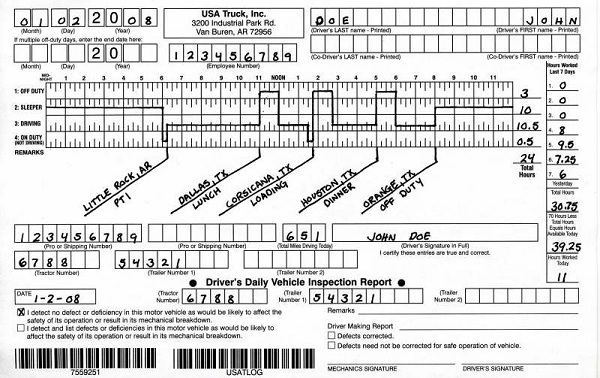
Hours of Service
|
In the United States, the Federal Motor Carrier Safety Administration (FMCSA) governs the working hours of anyone operating a commercial motor vehicle (CMV) in the USA for the purpose of interstate commerce. The driver of a commercial motor vehicle is required to keep a record of hours they worked using a driver's logbook. The logbook outlines and records the total number of hours spent driving and resting, as well as the time when the change in duty status occured. Drivers may alternately keep track of their hours using an electronic on-board recorder (EOBR), which automatically records their hours spent driving the vehicle. Hours of Service rules are in place to prevent accidents caused by drivers being tired. FMCSA regulation §395.2 states:
Since 2005, property carrying CMV drivers are required to take a full 8 hours of rest, with 2 hours allowed for off duty periods - for a total of 10 hours off duty for every 14 hours worked, with no more than 11 hours of worked time being on-duty driving time. Drivers may also not operate a CMV after having been on-duty for more than 60 hours in a 7 day period when a motor carrier does not operate every day of the week, or when a driver has been on duty for more than 70 hours in an 8 day period when the motor carrier operates every day of the week. If a driver hits 70 hours of on-duty driving in an 8 day period, the driver's daily driving limit may be reduced (70/8 = 8.75 driving hours per day). A driver may be allowed to take 34 hours off duty to reset the weekly total back to zero. This is known as a 34 hour restart. Hours of service rules are detailed at Hours of service of drivers. There are numerous exceptions to these rules. A drivers logbook example is seen below. 
The U.S. Department of Transportation, Federal Motor Carrier Safety Administration has a number of Hours of Service Logbook Examples. Wikipedia has an articles on Hours of Service and Electronic on board recorders. |
Copyright © 2006-2013 http://www.mileage-log.com and Spectrum Research, Inc., All Rights Reserved.